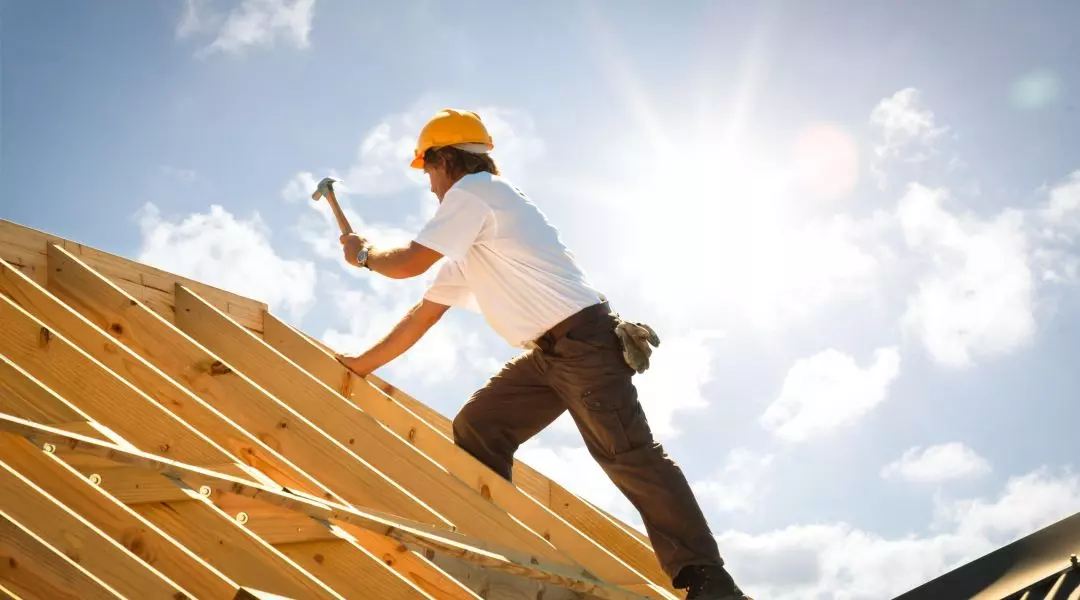Frame houses are becoming increasingly popular. They are lightweight, but at the same time durable, and allow for quick and cheaper construction. The issue of energy efficiency attracts particularly great attention, because thanks to the characteristics of the wood from which they are made, the structure both cools and heats up quickly. For this reason, adequate insulation is key, which will support the building in maintaining a specific temperature. The roof plays a particularly important role, as it is through an uninsulated or poorly constructed roof that up to 20 to 40 percent of heat can escape.
Frame houses have a reputation for being convenient, modern and environmentally friendly.They are characterized primarily by a short construction time, compared to brick houses, which is why many investors opt for them. However, one of the most important issues is insulation, since the structure is built of wood, and this material, although distinguished by its environmental friendliness, reacts more quickly to temperature changes and lets in more cold and warm air. As a result, in winter the building cools down more often, while in summer it heats up. However, by the same token, it is much easier to change the temperature of a building with a furnace or air conditioning. In turn, to maintain it, proper insulation is necessary. Particularly important in this is the roof, which can stop the heat going up in winter, and reduce the sun's influence on the house in summer. For this reason, it is advisable to use a roof membrane in the construction, which will provide an insulating and protective layer and extend the life of the building.
Roof membrane in a frame house
A roof membrane is worth using in the construction of a frame house. It is the one that can help maintain the right temperature as an insulating layer. A study of the insulating properties of a 100-meter attic conducted by the Fraunhofer Institute in Holzkirchen shows that a suitable roof membrane reduces air exchange by 30 percent. Thus, it significantly affects the energy demand of the building. In the case of a frame house, roof membranes can also be used as an insulating layer for the walls. This part of the structure is made of wood, so it also requires the use of quality materials to prevent heat loss and airing of the walls.
-When building a timber-frame house, it is important, first of all, to make a good seal. Any gaps at the joints or exposed surfaces threaten both wind and water penetration. It is therefore necessary to choose a layer whose parts can be tightly connected. For roofing membranes, a good solution is to use a product with double adhesive strips. The glued membrane forms a barrier in the roof envelope, preventing cold or moist air from the outside from reaching the thermal insulation. Thinking precisely about such high wind tightness, we have also included such products in our offer," says Piotr Pytel, technical advisor and expert at Dorken Delta.
The roof membrane also protects the roof from extreme weather conditions. When properly selected, it can protect not only against temperature fluctuations and wind, but also moisture and UV radiation, and even air movement. The material can also significantly extend the life of the roof. Products with quality guarantees of up to 30 years are already available on the market.
Quality key in insulation
However, it is important to remember that when choosing a roofing membrane, regardless of the type of building and roof, quality is important. Unproven products can fail to perform their function or quickly lose their lifespan, and pose a great danger when working at height. Using them can, over time, even lead to dampness and degradation of the entire structure and significantly reduce the energy efficiency of the frame house.
-When choosing quality membranes, it is advisable to be guided by certificates, standards and markings that confirm the quality of the product and its resistance to particular factors. Examples include the EN- 13859-01 standard, which indicates the material's compliance withEuropean Union regulations, or the more recent ETA certificate. It defines the latest verification tools and is continuously updated and adapted to current knowledge, so it is the most reliable confirmation of product quality, " says Piotr Pytel, technical advisor and expert at Dorken Delta.
Frame houses are comfortable and ecological, but particularly demanding in terms of insulation. It is the latter that plays a key role in the case of energy efficiency of the entire building. Therefore, when choosing the right products, it is worth considering quality roofing membranes that can fulfill this role and, in addition, protect the building from many factors, reduce energy expenses over time and extend the life of the roof.
For more information, visit the company's {tag:Manufacturer} page on the PdD portal.





















